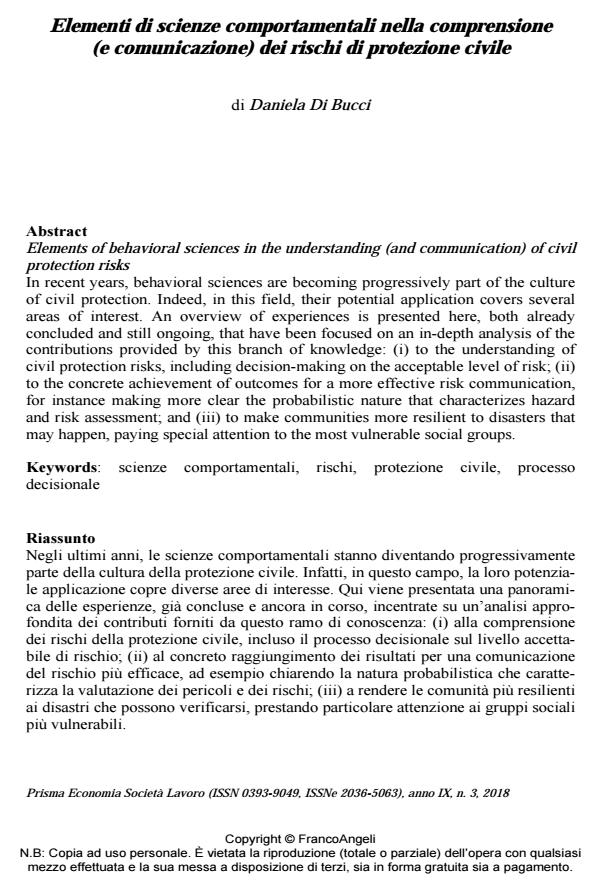Elements of behavioral sciences in the understanding (and communication) of civil protection risks
Journal title PRISMA Economia - Società - Lavoro
Author/s Daniela Di Bucci
Publishing Year 2019 Issue 2018/3
Language Italian Pages 13 P. 46-58 File size 177 KB
DOI 10.3280/PRI2018-003004
DOI is like a bar code for intellectual property: to have more infomation
click here
Below, you can see the article first page
If you want to buy this article in PDF format, you can do it, following the instructions to buy download credits

FrancoAngeli is member of Publishers International Linking Association, Inc (PILA), a not-for-profit association which run the CrossRef service enabling links to and from online scholarly content.
In recent years, behavioral sciences are becoming progressively part of the culture of civil protection. Indeed, in this field, their potential application covers several areas of interest. An overview of experiences is presented here, both already concluded and still ongoing, that have been focused on an in-depth analysis of the contributions provided by this branch of knowledge: (i) to the understanding of civil protection risks, including decision-making on the acceptable level of risk; (ii) to the concrete achievement of outcomes for a more effective risk communication, for instance making more clear the probabilistic nature that characterizes hazard and risk assessment; and (iii) to make communities more resilient to disasters that may happen, paying special attention to the most vulnerable social groups.
Keywords: Scienze comportamentali, rischi, protezione civile, processo decisionale
Daniela Di Bucci, Elementi di scienze comportamentali nella comprensione (e comunicazione) dei rischi di protezione civile in "PRISMA Economia - Società - Lavoro" 3/2018, pp 46-58, DOI: 10.3280/PRI2018-003004